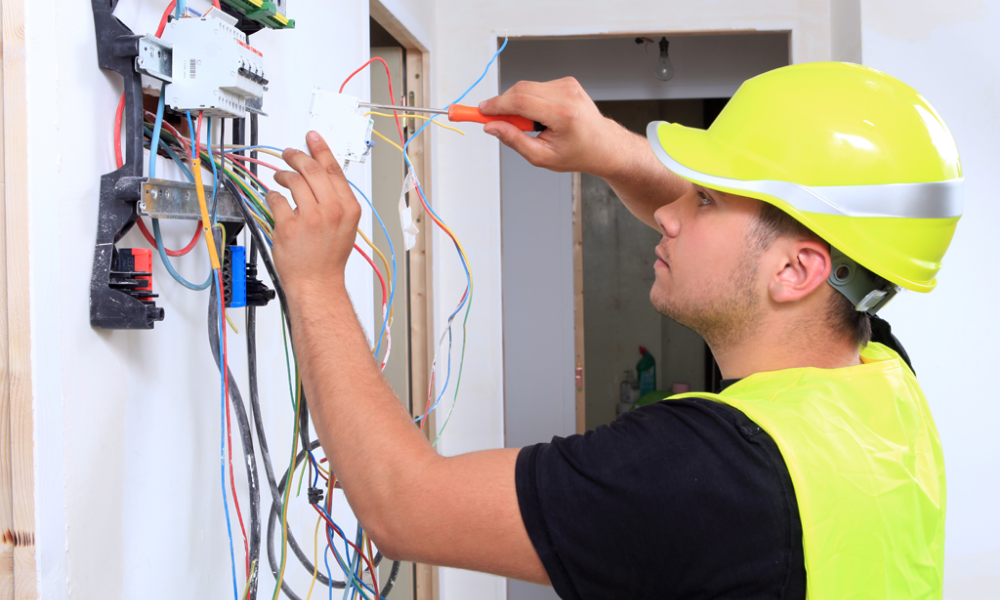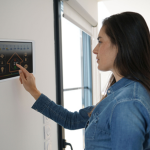Voltage fluctuation is a big problem for home appliances these days. When there is a voltage fluctuation, your appliance will be damaged or malfunction. For example, when you use an electric kettle to boil water and then there comes a sudden power outage after the water has already boiled, the sudden change in power might make your electric kettle explode. So, how can you protect your home appliances from voltage fluctuation?
What Is Voltage Fluctuation?
Voltage fluctuation is a change in voltage over time. When the voltage changes, it can cause problems with electrical equipment. Voltage fluctuations can damage equipment, cause it to work improperly, or even cause it to stop working altogether.
Several causes of voltage fluctuations include power outages, brownouts, and line noise. Power outages are caused by a failure in the power grid, while an overload causes brownouts on the grid. Line noise is caused by electrical interference from other devices or appliances.
Changes in the electricity demand can also cause voltage fluctuations. When more people turn on their lights or appliances, the demand for electricity increases, and the voltage can fluctuate.
Why Is There a Need to Protect my Home Appliances from Voltage Fluctuation?
Following are the reasons to protect my home appliances from voltage fluctuation:
1. Voltage Fluctuation Damages Appliances– When an appliance is subjected to voltage fluctuations, it can cause damage to the internal components. It can cause the appliance not to work correctly or even stop working altogether.
2. Voltage Fluctuation Can Cause Fires- Electrical fires can occur when there is a sudden change in voltage, and this can cause the electrical wiring to overheat and start a fire.
3. Voltage Fluctuation Can Cause Safety Hazards- voltage fluctuations can also pose a safety hazard. If an appliance is not working correctly, it can pose a danger to you and your family.
4. Voltage Fluctuation Can Waste Energy- When appliances are not working correctly because of voltage fluctuations, it can cause them to use more energy than they should. It can lead to higher utility bills.
5. Voltage Fluctuation Can Damage Electronics- voltage fluctuations can also cause damage to electronic equipment. It can be costly to repair or replace.
It is essential to protect your home appliances from voltage fluctuations for the safety of your family and your wallet. Using a surge protector can help ensure that your appliances are protected from damage caused by voltage fluctuations.
How to Protect your Home Appliances from Voltage Fluctuation?
There are a few things that you can do to protect your home appliances from voltage fluctuations:
Install a Whole-House Surge Protector- A whole-house surge protector will protect your appliances from any sudden spikes in voltage outside your home. It is imperative if you live in an area with frequent thunderstorms.
Unplug Appliances When Not In Use- One of the best ways to protect your appliances from voltage fluctuations is to unplug them when they are not in use. It will prevent them from drawing power from the electrical grid and being damaged by sudden spikes in voltage.
Use Energy-Efficient Appliances- Another way to protect your appliances from voltage fluctuations is to use energy-efficient models. These appliances are designed to draw less power from the electrical grid, which can help to mitigate the effects of voltage fluctuations.
Check Your Home’s Wiring- If your home has older wiring, it may be more susceptible to voltage fluctuations. Having your home’s wiring checked by a professional electrician can help you identify any potential problems and make sure that your appliances are protected.
Have Added Protection for Specific Devices- Some appliances, such as computers and televisions, are susceptible to voltage fluctuations. Installing a surge protector for these devices can help protect them from damage.
Monitor the Voltage in Your Home- One of the best ways to protect your appliances from voltage fluctuations is to be aware of the voltage in your home simple. Investing in a voltage monitor can help you keep track of the voltage in your home and take steps to protect your appliances if it suddenly spikes.
These are a few things that you can do to protect your home appliances from voltage fluctuations. Taking these precautions can help to ensure that your appliances are protected from damage and continue to work correctly.
How Do I Check the Power Fluctuation in my House?
There are a few ways that you can check the power fluctuation in your house:
Check your circuit breakers- One way to check the power fluctuations in your home is to check your circuit breakers. If you see frequent breaker trips, it could indicate a problem with the voltage in your home.
Monitor the voltage with a meter- Another way to check the power fluctuations in your home is to use a voltmeter to monitor the voltage in your electrical system. If you see sudden spikes or dips in the voltage, it could indicate a problem with the power supply in your home.
Check the lighting in your home- Another way to check for power fluctuations is to observe the lighting in your home. If you notice that the lights are flickering or dimming, it could indicate a problem with the power supply in your home.
These are a few ways to check for power fluctuations in your home. If you notice any of these signs, it could indicate a problem with the voltage in your home.
How Do you Stabilize Fluctuating Voltage?
There are a few ways that you can stabilize fluctuating voltage:
Use a voltage regulator- A voltage regulator is a device that helps to stabilize the voltage in an electrical system. It can be used in your home or business to protect your appliances from damage caused by voltage fluctuations.
Use a power conditioner- A power conditioner is a device that helps to filter out any noise or fluctuations in the voltage signal. It can help protect your appliances and electronic equipment from being damaged by these fluctuations.
Install a UPS system- A UPS (uninterruptible power supply) system is a device that will keep your electrical devices running even in the event of a power outage. It can be a lifesaver during an emergency and help keep your business running smoothly.
Use a line reactor- A line reactor is a device that helps to smooth out the voltage fluctuations in an electrical system. It can help protect your appliances and electronic equipment from being damaged by these fluctuations.
Implementing proper power factor correction- Power factor correction is a technique that can improve the power quality in an electrical system. It can help reduce the effects of voltage fluctuations on your appliances and equipment.
Using active or passive harmonic filters- Harmonic filters can be used to remove harmonic distortion from an electrical system. It can help improve the power quality in the system and protect your appliances and equipment from being damaged by harmonic distortion.
There are several ways to stabilize voltage fluctuations in your home or business. By using one or more of these techniques, you can help to protect your appliances and electronic equipment from damage caused by voltage fluctuations.
What Appliances Are Affected by Low Voltage?
Several appliances can be affected by low voltage:
Refrigerators- A refrigerator needs a certain amount of power to run correctly. If the voltage in your home is too low, it could cause the refrigerator not to run correctly or even damage the compressor.
Freezers- The same goes for freezers- if the voltage in your home is too low, it could cause the freezer not to run correctly or damage the compressor.
Air conditioners also need a certain amount of power to run correctly. If the voltage in your home is too low, it could cause the air conditioner not to work correctly or even damage the compressor.
Conclusion
It’s challenging to protect appliances from voltage fluctuation, but you can do a few things. One is that if your home has an electrician or appliance repair service on retainer, they should help with any repairs. If not, the best thing would be for you to call them and see what options exist to get your appliances repaired or replaced. It would help if you were sure to have a backup plan in place in case of power outages, such as a generator. And finally, if you live in an area prone to severe weather, it’s good to keep an emergency kit on hand that includes food, water, and other essentials.








Leave a Reply